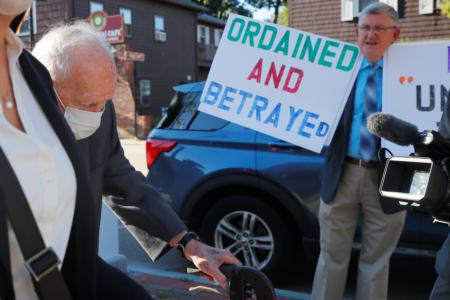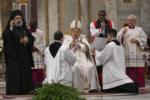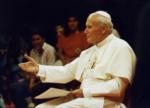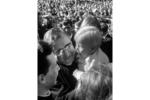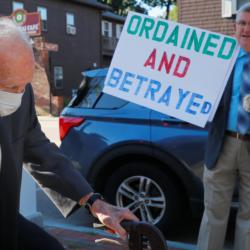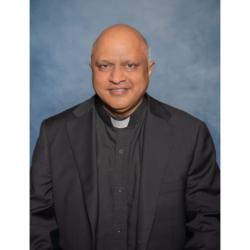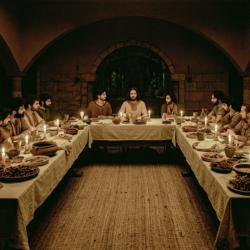The trade of 'the Gray Eagle'
Can you believe that the Boston Red Sox once traded away a player who was considered to be one of the best in all of baseball? He had just turned 28 years old and was right in the prime of his career; he was a defensive whiz, the best outfielder of his day and one of the greatest of all-time; he terrorized the opposition with his base-running skills; added to that, he was a terrific hitter.
And his name wasn't Mookie Betts. Nor was it Babe Ruth, who, by the way, wasn't traded to the New York Yankees. He was sold for cold, hard cash, something to which then-Sox owner Harry Frazee was addicted.
The star player the Red Sox traded was center fielder Tris Speaker.
Just before the beginning of the 1916 season, Speaker was sent to the Cleveland Indians in return for pitcher Sad Sam Jones, minor league third baseman Tommy Thomas, and $55,000. On the face of it, it appeared to be a wildly one-sided deal favoring the Indians. But the Red Sox had good reason for making the deal.
That reason was religion.
For several years, the Red Sox had been a team riddled with dissension between two warring factions: Catholics and Protestants. This was in a day and age, remember, when the two groups regarded each other the way that Democrats and Republicans do today, as blood enemies. Speaker, who had reputedly been a member of the Ku Klux Klan in his hometown of Hubbard, Texas, was virulently anti-Catholic and the outspoken leader of the Protestant faction. Duffy Lewis and Harry Hooper, his two mates in the outfield, were both Irish-Catholic, and things degenerated to the point where they didn't even speak to Speaker, nor he to them. The religious rifts even led to occasional fisticuffs in the clubhouse.
The two factions lived separate lives away from the ballpark, with the Catholics congregating in and around Kenmore Square, near Fenway Park, and the Protestants heading to the suburbs, mostly in the Winchester area.
The atmosphere around the team was poisonous, and owner Joseph Lannin (he would sell the team to Frazee later in 1916) knew that something had to be done before the situation got totally out of hand. Boston was in those days a largely Irish-Catholic city; the Irish dominated its politics and made up the bulk of Red Sox fans. So it was reluctantly decided to trade Speaker, as great a player as he was.
Money was also a factor in the deal -- isn't it always? The upstart Federal League, in an attempt to become baseball's third major league, had begun poaching star players from the American and National leagues. To keep Speaker on their roster, the Red Sox had doubled his salary to $18,000 a year. When the Federal League went out of business following the 1915 season, Boston tried to cut back his salary. Speaker wouldn't budge, so the team solved its contractual problem by shipping it -- and Speaker -- to Cleveland.
How did the trade of Speaker affect the Red Sox as a team? In 1915, his last with Boston, the Sox had won the World Series championship. In 1916, with "The Gray Eagle" (called that because of his prematurely graying hair) no longer on the roster, they won the World Series again. The Red Sox managed to weather the loss of Speaker in part because of the emergence of another superstar. Only 21 years old in '16, he won 23 games and led the league with an earned run average of 1.75. He was also blossoming into a pretty good hitter. His name was Babe Ruth. Another three seasons would go by before Harry Frazee would sell Ruth, and his own soul, to Jacob Rupert and the New York Yankees. The Red Sox would not recover from that deal for another 86 years.
Speaker didn't do too badly himself in that first year in Cleveland. He won the batting title for the Indians with an average of .386. He played -- and managed -- for the Indians for 11 seasons, hitting .350 or higher in 10 of them. He hit 792 career doubles and had 449 career assists, still major league records. He finished with a lifetime batting average of .345, higher by a point than that of Ted Williams.
Things sometimes have a way of working themselves out, and that's what happened in the case of Tris Speaker. While playing for Cleveland, he met and fell in love with Mary Frances Cuddihy, an Irish-Catholic girl. So it was that the former Ku Klux Klanner was married in the rectory of a Catholic church with a Catholic priest presiding. His marriage changed him and his former KKK attitudes profoundly. Although he never converted to Catholicism, he often accompanied his wife to Sunday Mass.
Three decades later, the Indians became the first American League team to sign a black player, Larry Doby, just a few months after Jackie Robinson had broken in with the Dodgers. Doby was at that time a middle infielder, but the Indians decided to make him a center fielder. Speaker, the greatest center fielder in Cleveland history but also a former member of the Ku Klux Klan, was asked to teach Doby the ropes and readily agreed. The two men became close, so close that when Doby retired and was honored with a parade, he asked his old mentor to ride with him in the back seat of an open convertible. So, the two of them rode through the streets of Cleveland side by side, one the first black player in American League history, and the other his teacher, a former member of the Ku Klux Klan.
Today, there are two members of the Baseball Hall of Fame in Cooperstown, New York, who played center field and who wear Cleveland Indians caps on their plaques: Tris Speaker and Larry Doby.
It's too bad that Mary Frances Cuddihy wasn't from Boston and that she hadn't met her future husband before he was dealt away.
- Dick Flavin is a New York Times bestselling author; the Boston Red Sox "Poet Laureate" and The Pilot's recently minted Sports' columnist.
